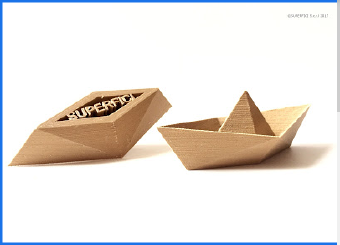Voices of the stakeholders
Interview with Guido Zannoni - Part #1
Technical Director of Superfici in La Spezia - Italy

Which tasks and objectives do you pursue as the Technical Director of Superfici?
In July 2016, almost 4 years ago, I founded with my fellow business partners Paolo L. Nazzaro and Davide Telleschi the company Superfici based in La Spezia, Italy.
The whole team comes from the University of Genoa, specifically from the University Campus “G.Marconi” of La Spezia, which is involved in Yacht Design and Engineering activities.
Since the beginning, we started many partnerships with local shipyards and design studios, providing a reliable service for the manufacturing of scale models, prototypes and one-off full custom components to be mounted onboard pleasure yachts of all sizes. Throughout the years, we specialized in the post-processing techniques and we are now able to deliver final components, such as helms, custom cases, radar and instruments supports.
Due to my marine engineering background and my working experience in the mechanical field, I manage the technical activities and I am involved in all R&D projects, including the research of new materials, machines and technologies to purchase, in order to keep our company at the state of the art of additive manufacturing techniques.
What perspective and special fields of application do you see for additive manufacturing in the future?
I believe the main strength of AM is the automation of the manufacturing process.
The shipbuilding industry, especially for small crafts and full-custom yachts, is still based on craftsmanship and hand work, which is good from the work employment point of view, but which usually leads to a very poor and inconsistent quality of the final product.
I think that 4.0. industry, which involves both high-tech machines and 3D modelers (whether they have an engineering or product design background), has the power to raise the quality of the workforce and, in the same time, to accelerate most of the operations which still require hours and hours of manual labour.
Compared to other techniques, Additive Manufacturing gives also designers and engineers a high grade of geometrical freedom while preserving control over mechanical performance. This opens up new opportunities for design manufacturing, shifting prototyping directly into the production field.
Future scenarios for AM applications include also the possibility to integrate larger elements and different materials, as well as different thicknesses and densities, providing solutions for the mechanical complexity of progressively more sophisticated boat components.
In addition to that, the chance to manufacture one-off and/or fully customized components without affecting time-to-market is without any doubt the real deal of 3D printing in industrial production, especially in yachts and super-yachts industry.
What was for you the main benefit of the Innovation Camp in Liberec?
The greatest opportunity I had at the Innovation Camp in Liberec was to expand my business network out of my original country, having the chance to meet other operators in the Additive Manufacturing field.
3D printing is way too young and immature for many of its potential applications, and SMEs in this business, like Superfici, desperately need to share thoughts, information and knowledge with their colleagues/competitors around, in order to open new partnership and to feel the gap with the traditional manufacturing.
Plus, the opportunity of opening technical partnerships with TUL and other Universities involved in the project, in order to test our 3D printed parts and techniques, may be crucial for the growth of Superfici in the years to come.
More information: www.superficilab.com
Read Part #2 of the interview with Guido Zannoni
The interview was conducted by Marlen Krause
